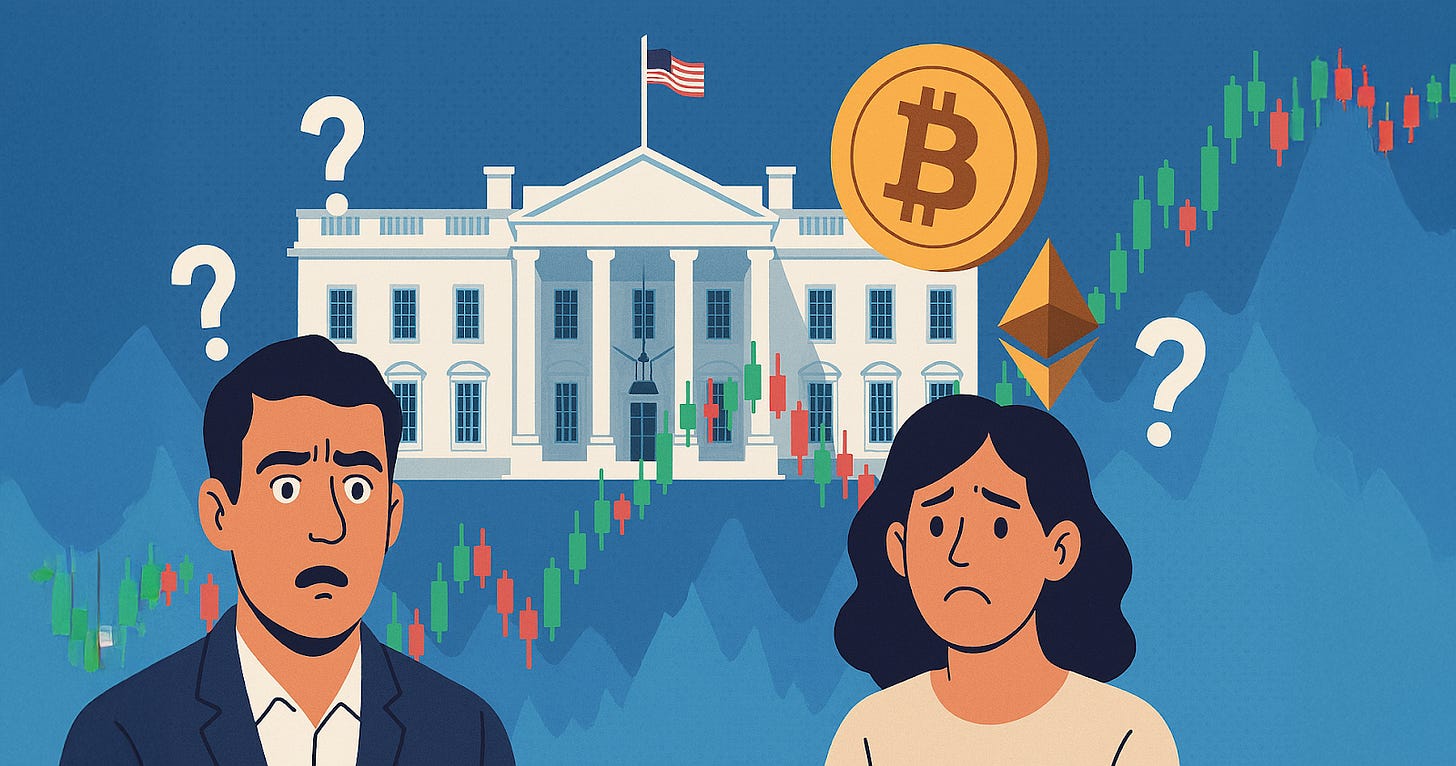Crypto Is On a Roll
Part III: Digital Asset Report - the narrative is still broken
Late July and early August were scorching for crypto, not just in price action, but in policy chatter. In Part I, we unpacked the Responsible Financial Innovation Act (RFIA). In Part II, we explored Ken Rogoff’s gold vs. Bitcoin thesis through the lens of intrinsic value. Today, we turn to the Digital Asset Report, released July 30, 2025 (Fact Sheet, PDF).
We know-we sound like a broken record at times; that’s mainly because the idea that one cannot invest in crypto is a radical shift in mindset. It flips the entire conversation. Frankly, it would be irresponsible not to keep saying that. Is everyone listening? No, of course not, myths are both cozy and convenient. Truths are disruptive. We won’t reach everyone, but we’ll continue to push forward.
So, through that same lens, here’s where the Digital Asset Report misses the mark:
Crypto “Investors” Are Happy
The report states:
As of June 2025, President Trump’s approval rating among investors in cryptocurrencies was 72%.
That stat comes from HarrisX. Their summary findings can be found here and the full findings/data breakdown are here. One standout finding:
64% of crypto investors and 40% of all retail investors say Trump’s policies have made them more likely to invest in cryptocurrencies.
Now, set aside your position for a moment and just consider how convoluted this becomes if we’re right. People are more likely to “invest” in crypto because of the president’s new directives. But, what if those holdings tank and never recover? Who’s to be held accountable?
Let’s be clear: We’ve never said people shouldn’t buy crypto. This is America, land of the free. We even own some ourselves–as speculation. Like Commissioner Peirce, we believe accountability should rest with the individual. But that only works if the third leg of the stool–clarity–is in place.
Our position is simple:
The government should tell people that one cannot invest in crypto;
and then get out of the way.
And, to be crystal clear…The issue is not that crypto prices could tank because the same is also true with stock prices. The key difference is, at least in theory, stock market participants have all the information they need to make informed decisions. With crypto, the way the policies are developing, the public does not have all the needed information to make an informed decision.
The public needs to know that they are not investing. That is the only way to truly shift responsibility and accountability to the public.
President Trump vs. President Biden
Another excerpt from the report:
The difference from prior years is stark. The Biden Administration’s approach to crypto was marked by regulatory overreach that countered the American tradition of embracing new technologies.
Unfortunately, the report turns crypto into a political debate. From our vantage point, this is a non-partisan topic. If you’ve followed us, you know we’ve been critical of the Biden-era SEC too; we felt they had the wrong approach. They consistently took the position that one could invest in crypto. Instead, this is what they should have said.
Gary Gensler may have had the right instinct about crypto, but he didn’t appreciate what investing actually means. For an agency whose mission is to protect investors, that’s a dangerous blind spot. Looser policy may look like a win for innovation–but if the public still doesn’t understand what they’re buying, it’s simply a mirage.
The Regulators’ Role
Final excerpt:
The Securities and Exchange Commission and the Commodity Futures Trading Commission should use their existing authorities to immediately enable the trading of digital assets at the Federal level.
We agree– trading of digital assets should be enabled. We’ve never advocated for a ban, but let’s be more specific around what that means:
It’s trading of digital assets, not investing in them;
The security or commodity concept is a distraction; and
The Howey test isn’t a hurdle–it’s a safeguard.
Until regulators find a way to extend the existing protections (with appropriate modifications), the public will remain confused. Confusion is the nemesis of accountability.
Bottom Line: One word. Many dangers. It’s still not too late to course correct, but we are coming dangerously close to the point of no return.




